The Ring of Fire is a giant geological feature circling the edges of the Pacific Ocean. It’s a 40,000 kilometre-long string of earthquake-prone zones and active volcanoes. This massive formation is home to 75 per cent of the world’s volcanoes, and 90 per cent of its earthquakes.
Natural disasters occurring along the Ring of Fire harm rich and poor alike. But the Ring’s natural disasters have the greatest impact on people in regions where many families battle poverty, like the Philippines.
At any given time, developing countries in the Ring may be experiencing or preparing for a volcano eruption, earthquake or tsunami. These disasters can set back economies for generations.
The Ring of Fire runs through some 15 countries, including Indonesia, New Zealand, the Philippines, Japan, the United States, Canada, Russia, Guatemala, Peru and Chile. Scores of communities in these countries are defined by their unlucky location—socially, economically and developmentally.
In this article, we’ll tell you why the Ring of Fire behaves as it does. We’ll explain how it harms communities and people alike, especially in the world’s poorest countries. And we’ll let you know how to help.
- What does the Ring of Fire do?
- What are some major historical events in the Ring of Fire?
- Are all Ring of Fire communities equally affected?
- How do vulnerable people suffer in the Ring of Fire?
- How does World Vision help communities in Ring of Fire countries?
1. What does the Ring of Fire do?
The Ring of Fire follows the Pacific coast in a ring shape heading north from Chile, before circling back south to end at New Zealand. Its natural disasters are primarily caused by movements of the Pacific tectonic plate, one of the massive slabs comprising the earth’s surface.
Only a little of the Ring of Fire’s activity is visible to the human eye. Its features formed millions of years ago. Even today, its movements begin far below the earth’s surface.
To understand it, you’ll need a few basics on earth science, including the Ring of Fire Map below.

Map: Courtesy of Wikimedia Commons
- The earth’s crust is made up of huge slabs of solid rock (tectonic plates).
- These plates are up to 25 kilometres thick and thousands of kilometres across.
- The Pacific tectonic plate—which lies beneath the Pacific Ocean—is among the largest of all the plates. It’s estimated to cover about 100 million square kilometres.
- These tectonic plates are prone to movement. When the pressure between plates intensifies, they crash into or slide over one another, creating deep ocean trenches.
- Over millions of years, the trenches allow magma (molten rock) to push up through the oceanic crust. They form volcanoes which become island chains such as the Philippines, Alaska’s Aleutian Islands, Fiji, Hawaii and the Galapagos Islands.
- As plates collide or overlap, the ground shakes, causing earthquakes and tsunamis.
From ocean activity to land disaster
Most of the world’s active volcanoes—452 in all—lie around the Ring of Fire. Lava, rock fragments, hot vapor and gas can erupt from the crater at the top. Thankfully, detection systems are becoming more evolved, giving officials a chance to evacuate affected areas.
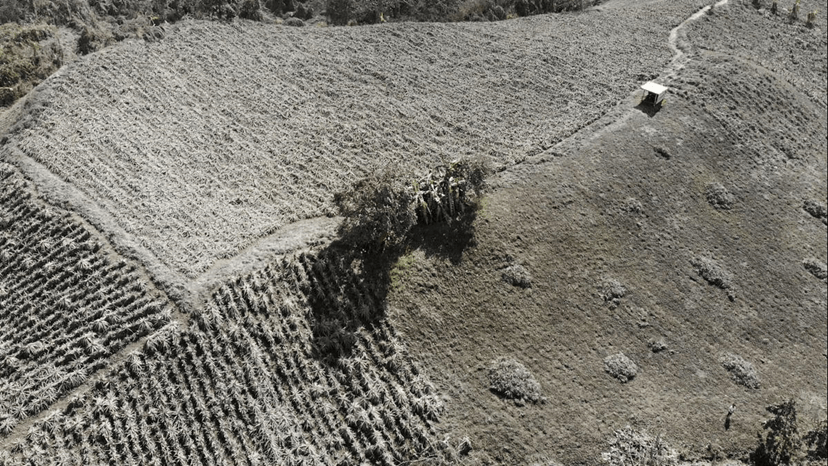
“It rained mud,” one woman told The Guardian after the Taal Volcano erupted in the Philippines in January 2022. This drone shot gives you the aerial aftermath. Photo: World Vision Philippines
When it comes to earthquakes, 81 per cent of the world’s largest occur around the Ring of Fire. Some quakes originate far beneath the floor of the Pacific Ocean, while others start with plate movements on land.
Powerful land earthquakes damage or destroy homes and infrastructure, injuring or killing thousands of people. Underwater quakes can create massive tsunamis, which pummel coastal communities.
While on-land earthquakes are difficult to detect in advance, researchers have made progress in detecting quakes on the ocean floor—giving people a short window to prepare for tsunamis.
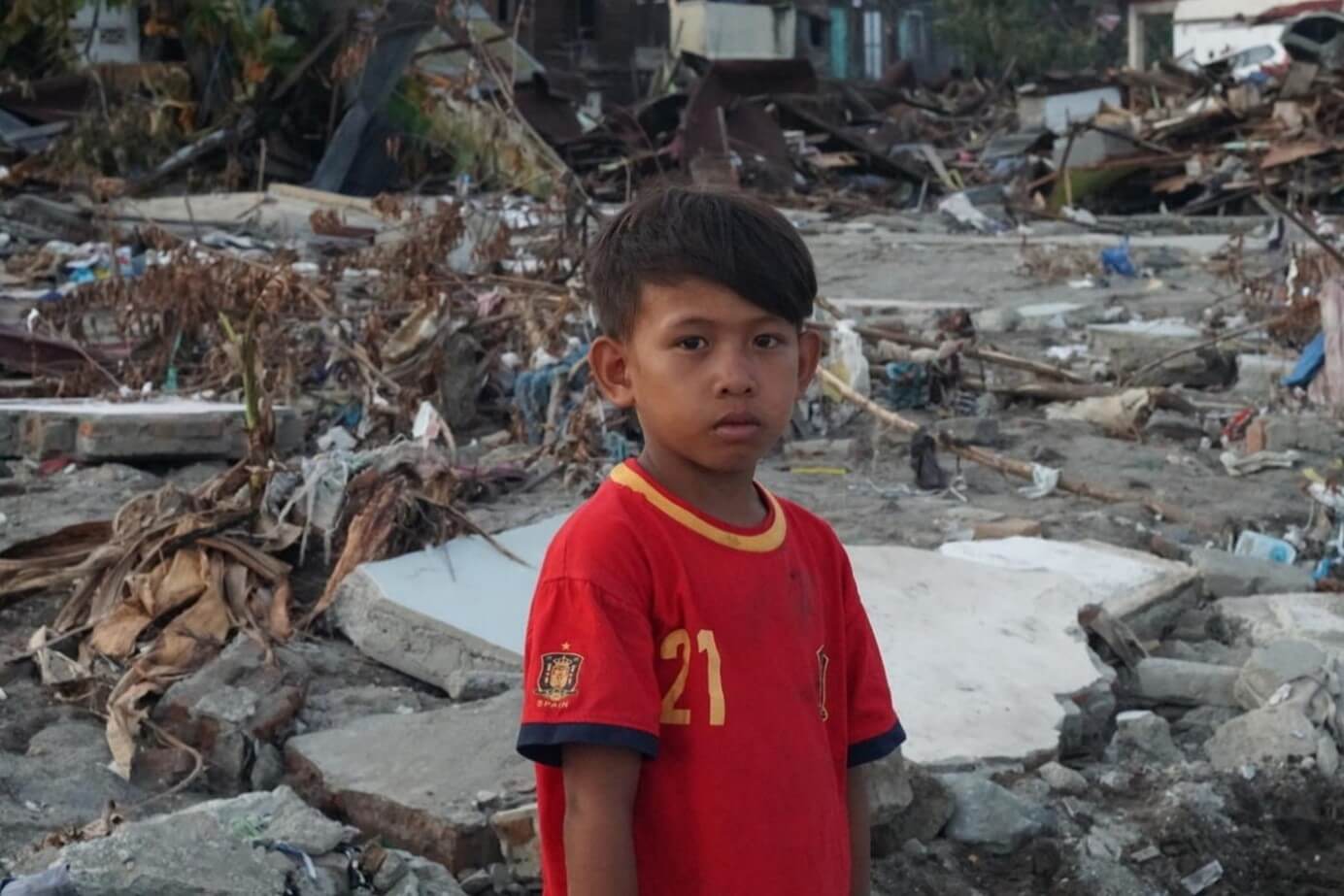
When this picture was captured in 2018, nine-year-old Alif in the Philippines said it was the first time in his life that Wani Port was so quiet. The twin disasters of an earthquake and a tsunami had decimated his coastal community. Photo: Rena Tanjung
2. What are some major historical events in the Ring of Fire?
Historically, many of the natural disasters occurring around the Ring have changed the path of entire civilizations. Here are a few examples:
44 BC: In Alaska—an eruption of the Okmok earthquake may have contributed to the rise of the Roman Empire. Its tremendous ash output triggered the second biggest temperature drop in 2,500 years. This fuels the political instability which eventually transforms Rome from a republic to an empire.
1556: In China—the deadliest earthquake in human history rocks Shaanxi province. The Pacific tectonic plate is partly to blame.
Although it lasts just seconds, the quake kills an estimated 830,000 people. It measures 8.3 on the Richter scale, which is not the strongest in recorded history. But it strikes in densely populated urban areas with poorly constructed homes and buildings.
1814: In the Philippines—The Mayon Volcano, which erupted for the first time in 1616, has its most devastating event. The eruption kills about 1,200 people. Some of Mayon’s 59 eruptions since 1616 have caused explosive blasts to send ash, lava and volcanic gas raining down on surrounding areas.
1815: In Indonesia—Mount Tambora erupts, causing the “year without a summer” in Western Europe, according to Atlas Obscura.
1906: In San Francisco, U.S.A.—This earthquake destroys 500 city blocks and kills 3,000 people. Half the San Franciscan population loses their homes to the quake and the fires it causes.
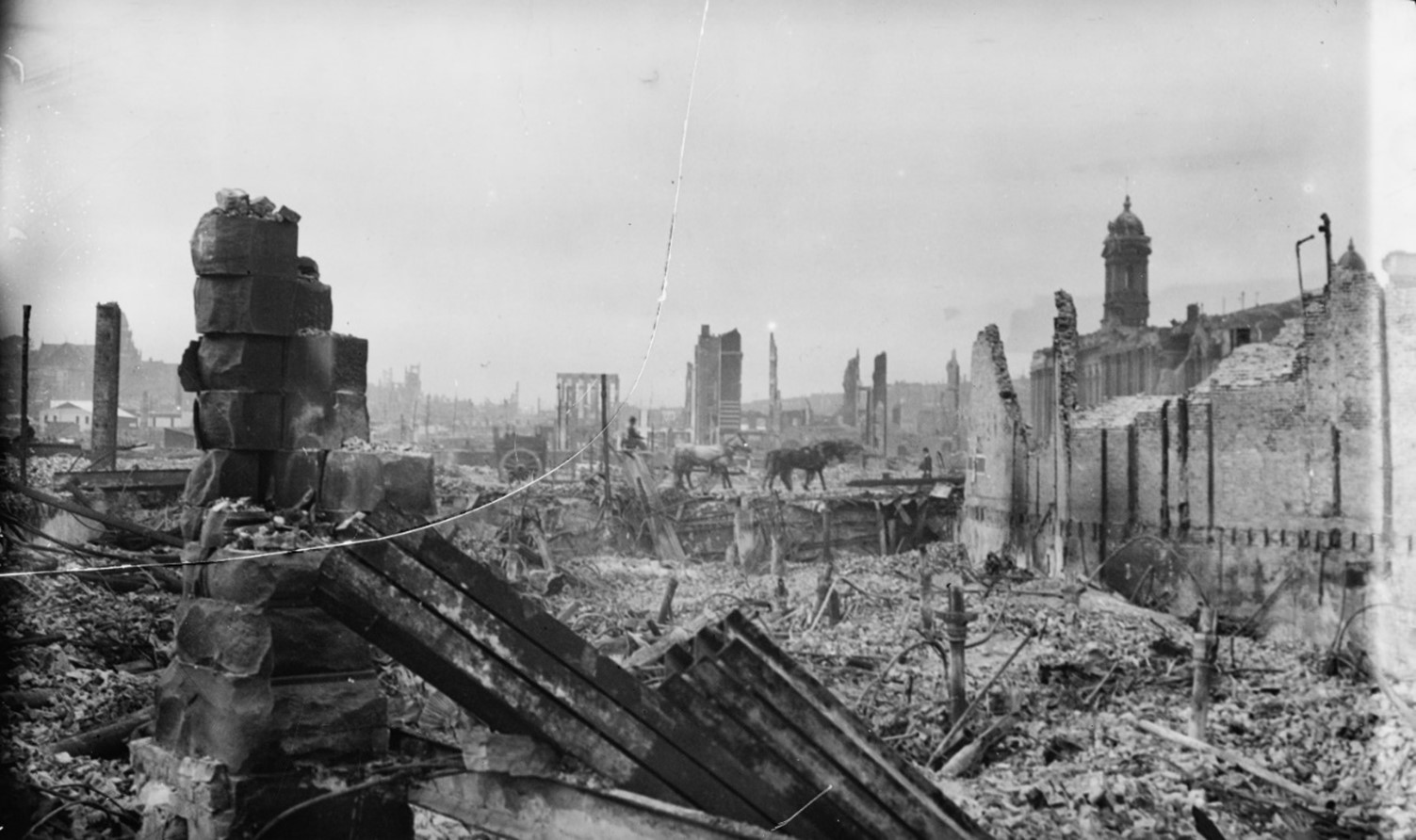
San Francisco, 1906. Photo: Courtesy of Wikimedia Commons and photographer Arnold Genthe
1960: In Chile—the biggest earthquake in instrumentally recorded history occurs near the southern city of Valdivia measuring 9.5 on the Richter scale. Its rumblings are initially mistaken for the start of a nuclear war.
Up to six thousand people in Chile die as a result of the earthquake, its aftershocks, and the ensuring tsunami. People as far away as Hawaii, Japan and the Philippines experience extensive property damage as the result.
“It’s a type of earthquake that needs a long time, many centuries, to accumulate the necessary force to generate such a large event,” said Marcos Moreno of CIGIDEN, a Chilean centre dedicated to preventing extreme natural events from becoming disasters.
2011: In Japan—the Great Tohoku disaster begins with a magnitude-9 earthquake that shakes the region, unleashes a savage tsunami and causes a nuclear meltdown. More than 18,000 people die as a result of this triple disaster.
Residents of Tokyo receive one minute of warning before the shaking starts, allowing them to stop high-speed trains and factory assembly lines. This prevents many deaths.
The first of multiple tsunami waves make landfall just over 30 minutes later, travelling up to 10 kilometres inland. It causes the failure of a cooling system at the Fukushima Nuclear Power Plant, resulting in a nuclear meltdown. This leads to the release of radioactive materials.
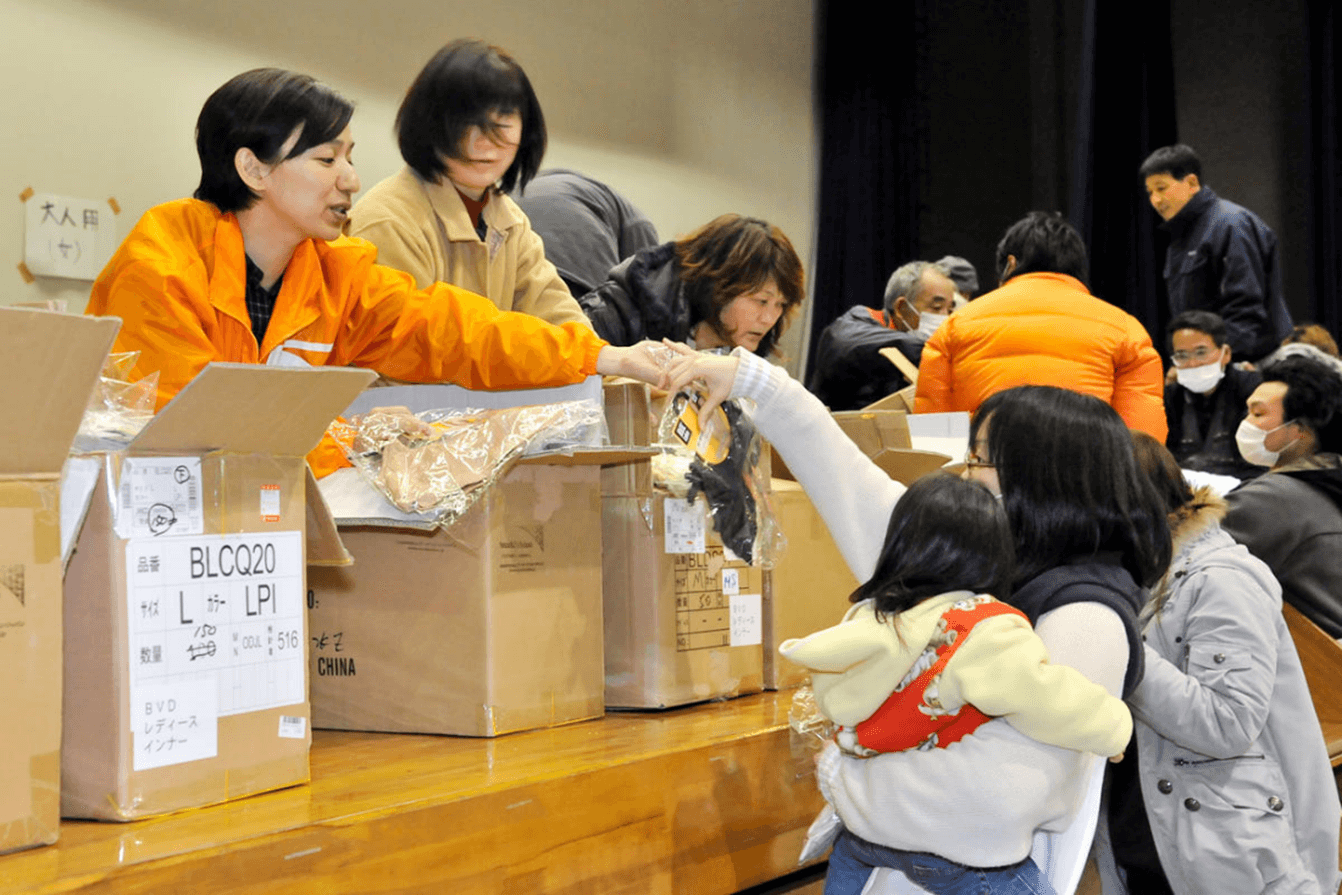
In Japan’s 2011 earthquake, tsunami and nuclear reactor meltdown, thousands of people sought help and shelter in gymnasiums like this one. World Vision teams distributed essentials like bedding and clothing. Photo: Kei Itoh
3. Are all Ring of Fire communities equally affected?
Impact is far more severe in some areas. Many people living over the Ring of Fire may go for years without an event. Yet some regions experience many earthquakes or volcanic eruptions every decade.
Here are the factors affecting severity of impact:
- The frequency of earthquake and volcano-related events, as people may get little chance to recover and rebuild between events.
- The severity of these events. For example, a magnitude-2 earthquake may only be detected by seismograph while an magnitude-8.5 can destroy entire communities.
- The proximity to the volcano, shoreline (in the event of tsunami waves), or earthquake epicentre. Consider the 2010 earthquake-tsunami catastrophe in Chile. The impact was disastrous closest to the shoreline. Overall, however, 25 per cent of the country’s population felt no strong shaking.
- The number of tectonic plates affecting a region. The 2004 tsunami that hit Indonesia, for instance, was caused by the Indian and Australian plates sliding past one another.
- The population density in affected areas. Communities with many structures all close together are far more vulnerable than people in remote rural areas. The 2010 earthquake in Haiti is just one devastating example.
- The construction standards of buildings and infrastructure. In North America, many buildings are constructed with codes, budgets and know-how. In many of the world's poorer regions, however, most homes and buildings are not earthquake resistant.
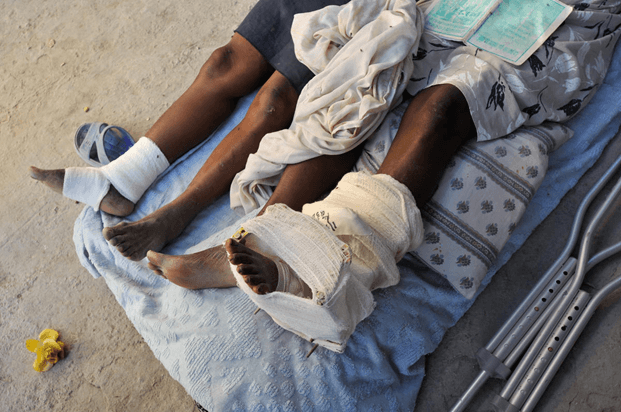
In the Ring’s impoverished regions, structures don’t meet the same codes as those in wealthier nations. Tumbling walls and roofs can fracture limbs and cause deadly internal injuries. Photo: Jon Warren
4. How do vulnerable people suffer in the Ring of Fire?
Today, millions of families around the Ring of Fire are either coping with or preparing for a major natural disaster.
As with every kind of natural calamity, the results are tragic. People die, children become orphans, livelihoods and infrastructure are devastated. Children’s education is interrupted, perhaps forever. Medical care is often scarce, when events destroy health centres, or render roads impassable
In earthquakes, volcanoes and tsunamis alike, terrain can become dangerous for children to walk and play in. Also, ash and gases spewing from active volcanoes can cause significant breathing challenges.
And as with any emergency, the chaos can separate children from their families. Girls and boys are laid bare to exploitation and trafficking—particularly when pre-existing crises like conflict have already shredded a country’s social safety net.
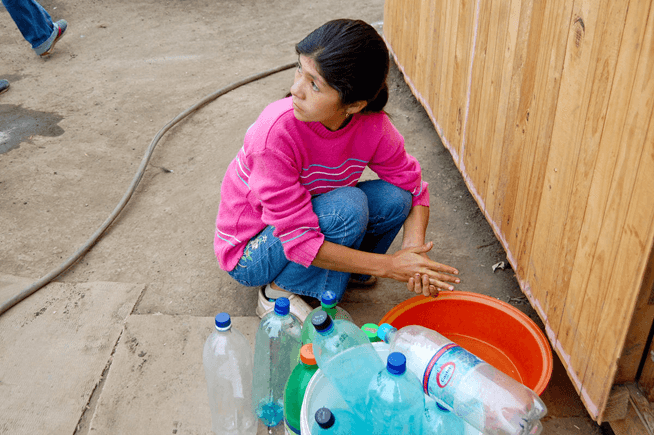
Over the centuries, earthquakes like those in Chile have forced families to flee the relative safety of home and community. This 2010 image shows a child in an emergency camp for displaced families. The municipality delivered water just once a week. Photo: Renato Hernandez
5. How does World Vision help communities in Ring of Fire countries?
Our teams work in Ring of Fire regions before, during and after natural disasters. We help families and communities:
Prepare for earthquake, volcanic and tsunami events by learning and practicing communication and evacuation principles. Research is happening into early warning systems for underwater events like tsunami-causing earthquakes. World Vision helps ensure remote and coastal communities have the most warning possible.
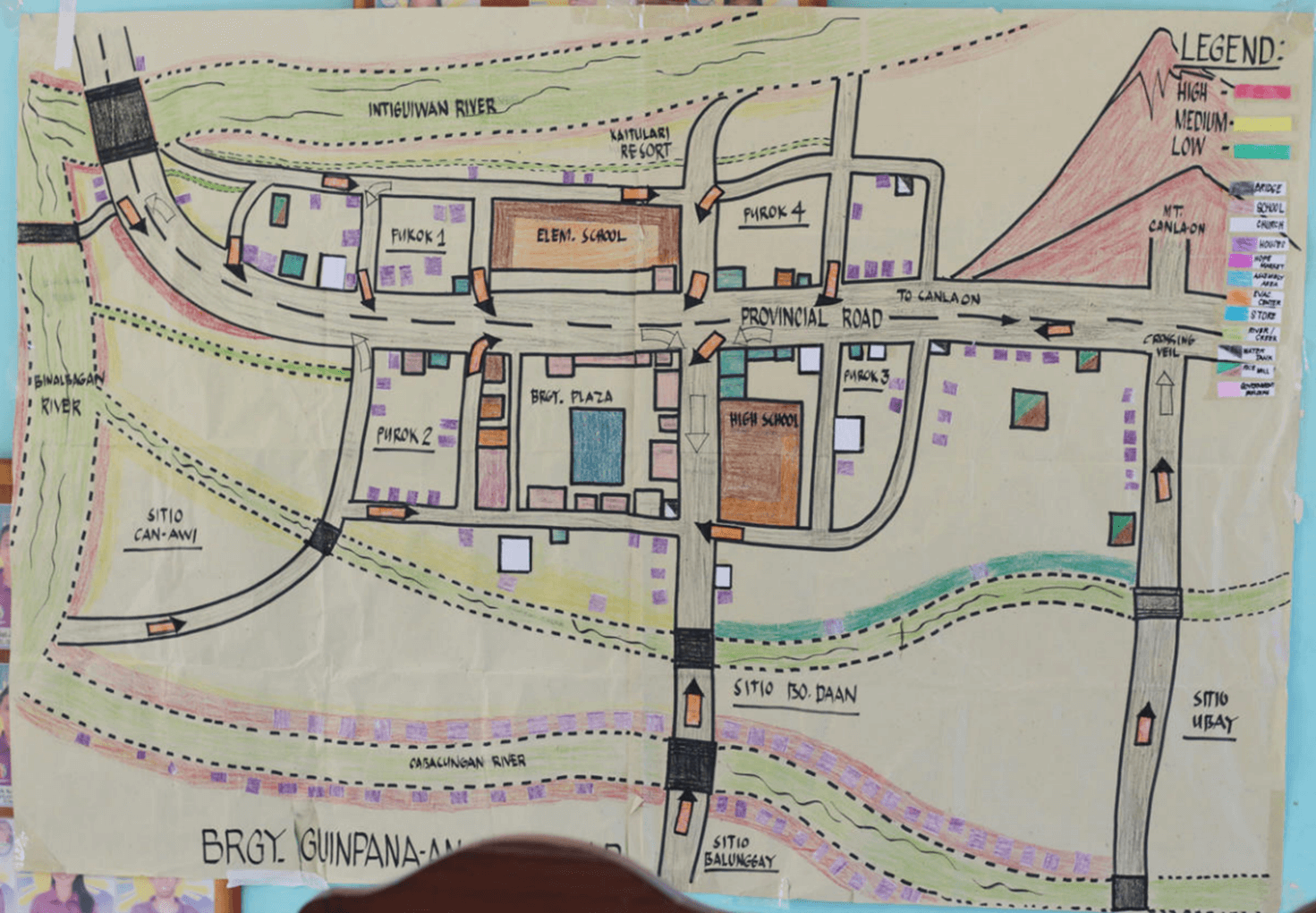
In the Philippines, World Vision teams helped young people prepare and practice with this evacuation map. They did it after a nearby volcano (top right of drawing) showed early signs for impending activity. Photo: Ramon Lucas Jimenez
Assist with communication from the regional centres which monitor the behavior of volcanoes and earthquakes (and tsunamis, where possible). We teach community members—including children—how to respond.
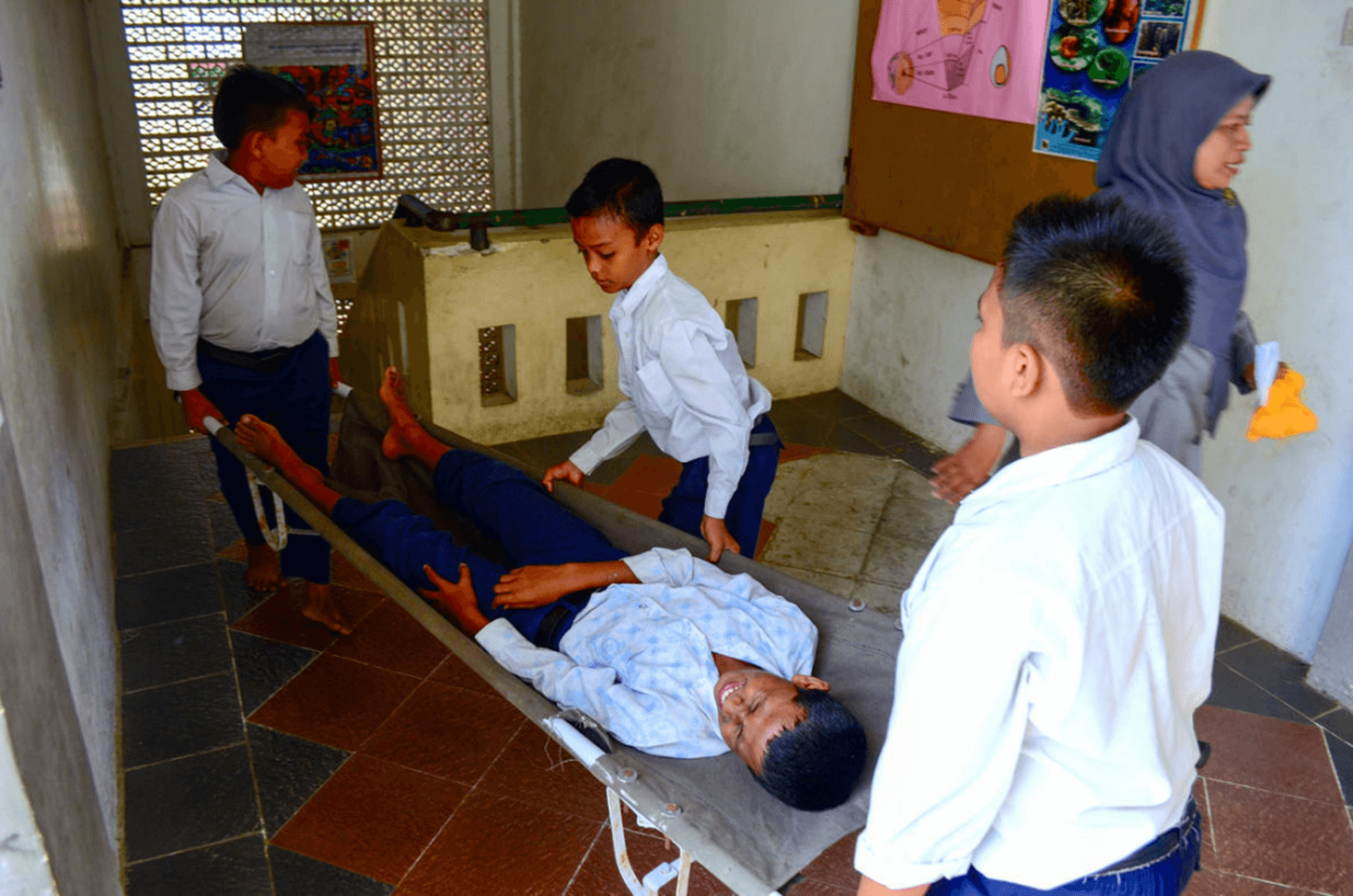
In an earthquake-prone area of Indonesia, school children practice one of several drills. They need to be well-prepared to save themselves and fellow students in an earthquake emergency. Photo: Mark Nonkes
Stockpile life-saving supplies in key areas around the Ring, to distribute when disaster strikes. As earthquakes, volcanoes or tsunamis happen, our teams are quick to the scene to provide assistance to those affected.
Distribute life essentials to children and families following a disaster. These often include clean water, emergency food, warm blankets, shelter materials, hygiene kits and medical supplies and care.
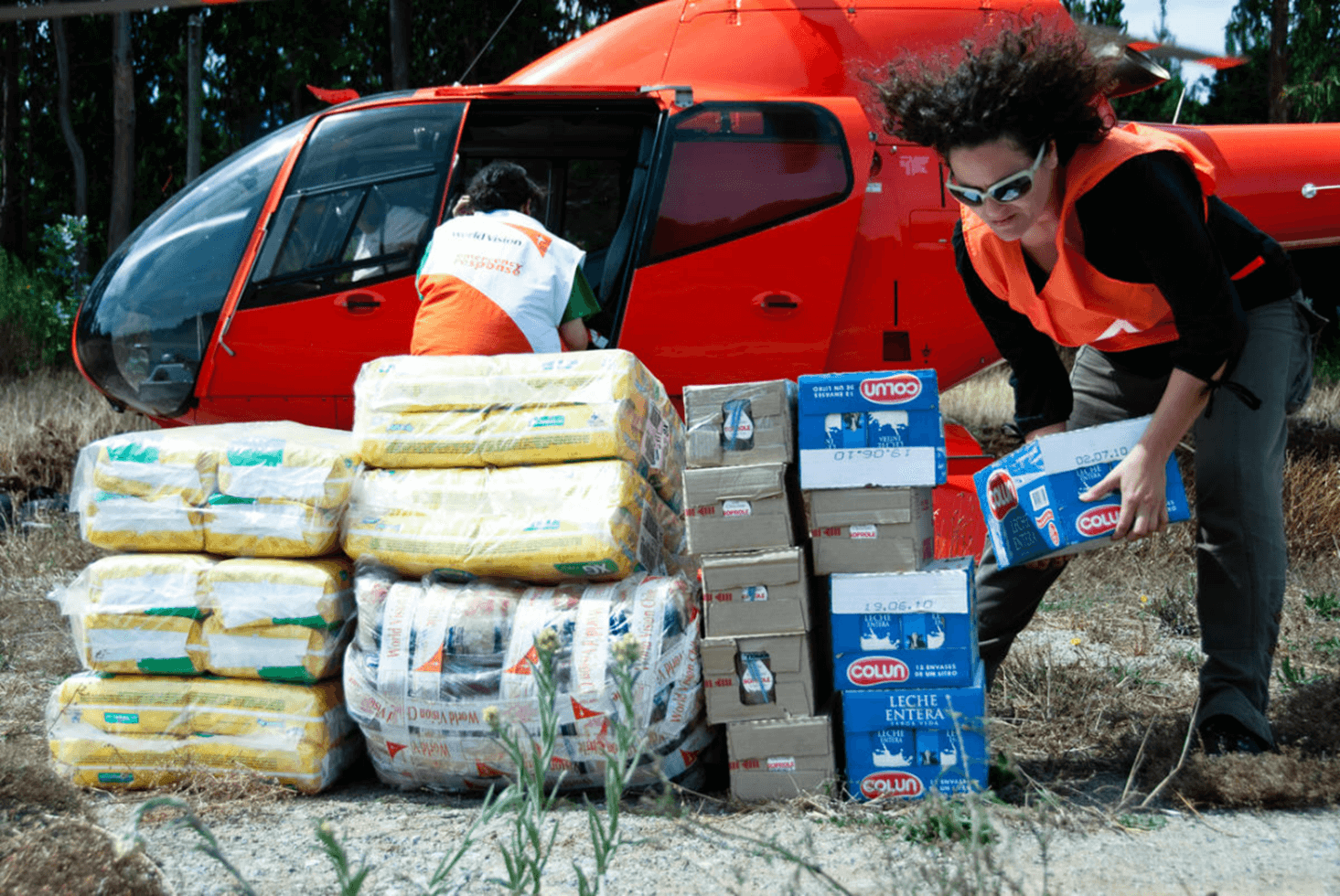
In Chile, a Ring of Fire country, a 2010 earthquake left multiple roads impassable for weeks. Emergency assistance workers like this World Vision team could only reach some communities via helicopter. Photo: Heidi Isaza
Create safe spaces for children in the wake of these emergencies, helping them heal, recover and start rebuilding their lives. We offer counselling, play activities and the chance for children to keep up on their learning.
Help communities rebuild homes, schools and infrastructure through ‘cash for work’ programs. We learn from each event and help build more effective emergency practices for the next time.
Want to help in emergencies like these? Visit our Disaster Relief page to learn how.